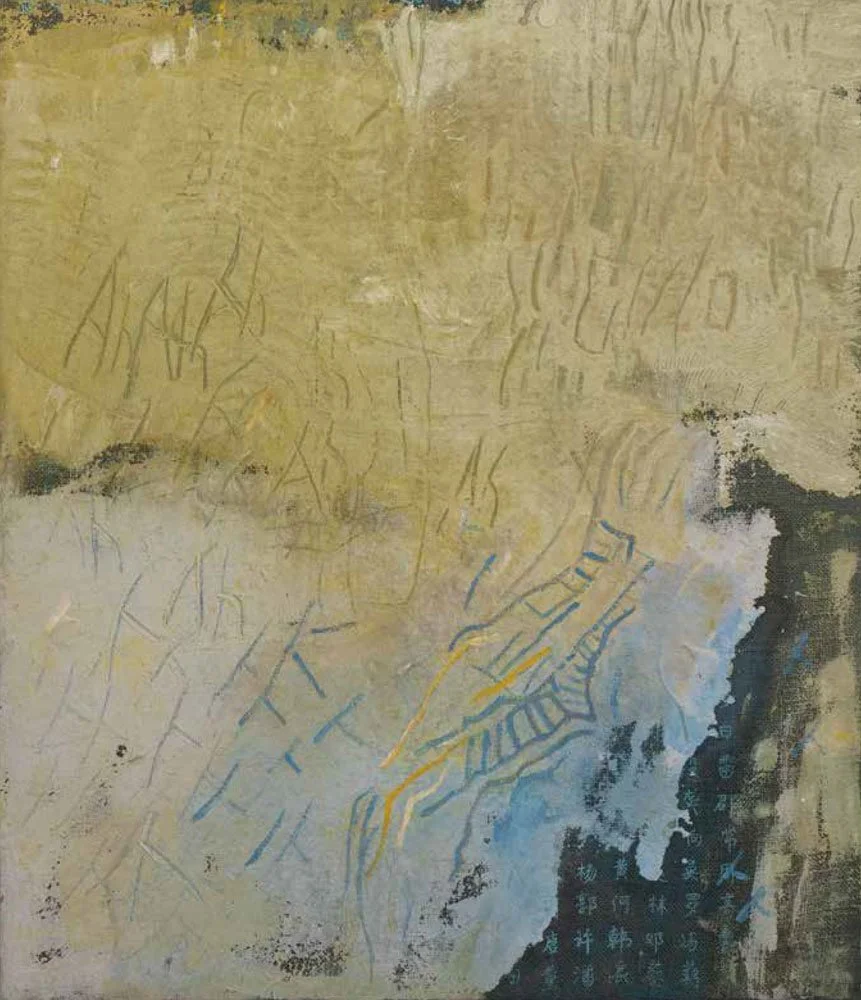Mei Zhao
The Landscape Under the Fairway
Mei Zhao grinned when we approached the muddy bank of Manly Creek. The waterway formed a natural moat for the manicured greens of Warringah Golf Club. She observed, “I can tell this was a garden”
Writer: Daniel Press
Photography: Simon Brown & Richard Trang
Mei Zhao
MEI's new series, Laboured Landscapes, opens at Northern Beaches Gallery in October and marks an exciting new direction for her practice. With finalist paintings in this year’s Georges River Art Prize and Northern Beaches Environmental Art Prize, the series has garnered a lot of attention through punchy linework, potent colours, and poetic materials. The canvases trace several Chinese market gardens that graced the former countryside of the Northern Beaches. The mid-19th Century saw many Chinese immigrants dream of making fortunes overseas during the New South Wales gold rush. After the gold was gone, many used their farming backgrounds to establish market gardens along the waterways of the East Coast.
Garden C. IV
In Manly Vale, Brookvale, and Curl Curl, Chinese market gardeners played an important role in the production of vegetables such as these settlements transformed from farmland to suburbia. By the 1890s, gardens were established along the waterways of Manly and Greendale Creek. Later, in the 1930s, they spread to the site of today’s Warringah Golf Club. These gardeners had largely returned to China by the 1950s, with those on the golf course being evicted in 1964. With so many of the sites being demolished and built over, their histories seemingly disappeared from the landscape.
Garden Series
Historians have only recently begun the slow process of piecing together the stories of these Chinese market gardeners through government papers, old maps, oral history, and glimpses from photographs.
Part of Mei Zhao’s painting practice is archival, uncovering these documents to form the underpainting of her landscapes.
If you look closely, you will find fragments from the archive: registration handprints in ink, text reading “Alien resident”, red “INDEXED” stamps, and wet-plate photography.
The other part is plein air painting, absorbing the sediments that remain beneath contemporary environments. The process helped Mei come to terms with her past. Growing up during the decades-long Cultural Revolution in Maoist China, she toiled in the countryside for six years as a forced farm labourer.
Mei then lived another creative life as a production designer before immigrating to Australia in 1994. During her first week at her new residence in Rockdale, she encountered the nearby Chinese market gardens and felt a sense of familiarity with her own experiences.
Garden C. II
While the sight of the countryside made her uneasy in China, it was here that she began coming to terms with her youth. Finding parallels with her own journey, her mark-making evokes the deep gouges of irrigation channels and the patterned garden beds seen in archival aerial photography. Caked mixtures of acrylic pigment and concrete powder recall a pastel spectrum of colours found onsite, while hessian strings together the canvas itself.
Garden C. V
Meeting Mei on one of her site visits to Manly Vale, I began to notice what has remained the same despite the transformations to the landscape. Mei goes back to different points in time when she paints from her mobile car studio. I wondered how much is informed by her own experiences, too, as she blends past and present.
@meizhaoarts





